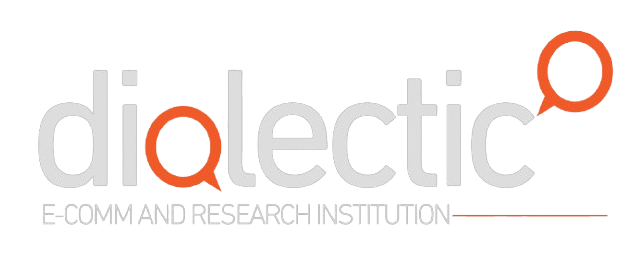The world is facing rapid global transformations impacting every aspect of life. Megatrends, macroeconomic and geostrategic forces shaping our world, have resulted in many of these transformations. A megatrend is a wave that either smashes you or propels you. Healthcare is one of the sectors facing challenges due to emerging megatrends (Junoverse, 2024).
What are these megatrends, and how are they affecting healthcare?
In Demographic Shift, people are living longer. It is expected that by 2027, the Sub- Saharan Africa will be the most populous place on earth (Sydney Business Insights, 2024). Moreover, the global population is expected to grow exponentially from 7.7 billion at present to 9.7 billion in 2050. Half of this population is predicted to increase from nine countries: India, Nigeria, Pakistan, the Democratic Republic of the Congo, Ethiopia, Tanzania, Indonesia, Egypt, and the United States of America (United Nations, 2024).
This megatrend affects several fields: health, education and social services, pensions, labor and employment, urban development, economic growth, social cohesion and even defense (UNFPA, 2024).
When studying the impacts of demographic shift on healthcare, the first factor to be taken into consideration is the burden on the government due to an increase in life expectancy. Therefore, the intentional and gradual prioritization has to be given to specific diseases affecting older age groups such as cerebrovascular diseases, cardiac diseases, diabetes, osteoporosis, arthritis and chronic kidney diseases. (Schoffer et al., 2023)
Such transformations shed the light on the importance of health service planning. Institutions need to take proactive measures, and support experienced healthcare professionals to continue working for the sake of preserving their knowledge and training the next generation.
Proactive measures include preventive care and early intervention. This way governments can lower healthcare system costs, secure sufficient funding, and support long-term economic and societal changes by tailoring strategies for the elderly. Furthermore, educating people about healthy lifestyles and preventive care fosters a proactive approach towards engaging communities about their health.
Many other opportunities arise from this demographic shift:
1. Improving hospital infrastructure to manage the rising influx of patients
2. Increasing production efficiency in many sectors
3. Investing more in age technology to embrace digital solutions tailored for elderly
4. Creating age-friendly cities
5. Addressing labor shortage and upskilling employees
6. Improving the housing sector
(Junoverse, 2024)
Another megatrend the world facing is Urbanization. People are increasingly and continuously moving to cities from rural areas, creating hence megacities. It is predicted that the cities of low- and middle- income countries will have most exclusively the future increases in the global population. (Duminy et al., 2023)
Moreover, it is expected that the global population living in cities will reach 70% by 2050 (Shao et al., 2022). These megacities are located in sub-Saharan Africa and South Asia. The rapid process of urbanization especially in poor countries will outpace the capacity of the local governments to contain such a burden. The burden will be mainly focused on housing, water and sanitation, transportation, healthcare and education services. (Duminy et al., 2023)
Furthermore, rapid urbanization has led to what is known as the “urban disease,” resulting in several social and environmental problems such as the disorder in urban space development, excessive population aggregation, lack of environmental protection, severe traffic congestion, lack of energy resources, and deterioration of the ecological environment. (Zhang et al., 2022)
The effect of urbanization on public health in general, and healthcare in particular, has always been controversial.
New health risks can emerge with urbanization, imposing a greater burden on the local governments. The burden can result from environmental pollution, sedentary behaviors, stressful lifestyles, nutritionally unbalanced diets, higher metabolic and cancer risks. Therefore, more diseases can result from these problems including chronic diseases, mental illnesses, asthma, anxiety and emotional disorders, infectious diseases, diabetes and hypertension. Additionally, the speed of population aggregation will lead to overcrowded hospitals, long wait times, poor quality of care, and shortage of professionals due to high demand.
In contrast, urbanization can have a positive effect on the health of residents as it encourages governments to increase investment in medical facilities and services and improve health service provision. The extent of public health promotion is mainly reflected in medical services provided to residents, since the level of services is compatible with urbanization development. Thus, better job opportunities with higher salaries can be created, and new job trends can emerge. Additionally, this enables people to have a more efficient and effective access to health services, such as healthcare infrastructure and health professionals, health technology and emergency care.
(Shao et al., 2022 and Zhang et al., 2022)
Furthermore, urbanization fosters innovation in health technology and smart healthcare solutions, in telemedicine, wearable health devices, and AI-driven diagnostics. Startups inspired by and passionate about new health technologies can play a pivotal role in such cities. People will have easier access to their health profiles, and can get in contact with their healthcare professionals through mobile applications for quick consultations and follow ups. Additionally, urbanization encourages the development of medical education centers, the promotion of vaccination campaigns and the establishment of preventive care programs. (Zhang et al., 2022)
A third megatrend that has been threatening human health for many years now is Climate Change. It is estimated that around 3.6 billion people already reside in areas highly susceptible to climate change. In addition, it is expected that it will cause around 250,000 additional deaths per year between 2030 and 2050, as a result of undernutrition, malaria, diarrhea and heat stress alone. Accordingly, the direct damage costs to health are predicted to be between 2 to 4 billion USD per year by 2030, excluding costs in health-determining sectors like agriculture, water and sanitation.
Furthermore, climate change is a threat multiplier. More extreme weather and climate events could take place as climatic conditions change, such as storms, extreme heat, floods, droughts and wildfires. These events have a direct and an indirect impact on people’s health, polluting air, soil, water and food systems, increasing the risk of deaths, noncommunicable diseases, the emergence and spread of infectious diseases, and health emergencies.
(WHO, 2023)
Threats resulting from climate change-related weather events can also include putting pressure on healthcare workers, disrupting physical infrastructure and interrupting supply chains. As a result, this will make it harder to treat patients, and threaten healthcare quality and safety. Climate can also affect human health through increasing heat-related issues, acute myocardial and cerebrovascular events, worsening air pollution leading to acute exacerbations of asthma and chronic obstructive pulmonary disease “COPD”, and increasing hospital admissions due to vector-borne diseases.
As an example, pollution associated with the U.S. healthcare industry led to the loss of 388,000 disability-adjusted life years in 2018 alone.
Governments and healthcare systems around the world have become more aware and concerned with the impact of climate change on healthcare, as well as the effect of health-related pollution on climate change. This is why many governments are relying on new resources, and following new trends such as the green hydrogen and the artificial proteins.
Healthcare has to respond to the increasing burden arising from diseases and address disruptions to infrastructure resulting from a rapidly changing climate. Government agencies must work with the healthcare industry and hospital systems and grab the opportunity to mitigate climate change, and impose measures and strategies (such as ESG: Environmental, Social, Governance) in order to anticipate any problem.
One effective measure hospitals can take is minimizing low-value care, i.e., when the harms or costs of care outweigh benefits. Overuse is one type of low-value care leading to patient harm, such as unnecessary diagnostic tests and treatments that can contribute to excessive resource consumption and avoidable pollution. Minimizing low-value care lowers healthcare costs, emissions, and harm to public health. Another opportunity to lower waste and cost and improve patient safety is addressing oversized medication vials for infused medications. This alone reduces the risk of dosing errors and wasted medications that can cost billions of dollars in cancer drugs alone.
(Sherman et al., 2024)
Furthermore, a comprehensive health system transformation along with global collaborative efforts, including data and knowledge sharing, across multiple stakeholder groups and industries mitigates new climate changes. Consequently, health systems will need to ameliorate two important areas: 1) resistance, which is the ability to prevent, decrease or delay the impact of climate change on humans, and 2) recovery, which is providing quick stabilization of the people and healthcare infrastructure affected by climate change, and guaranteeing effective treatment of long-term consequences. This way climate-resilient health systems can work to develop innovative treatments for infectious diseases, drug delivery innovations, and readiness planning of emergency services to anticipate climate events. When combining resistance measures with recovery strategies, health systems can mitigate the impact of climate change on people, and guarantee a sustainable healthcare infrastructure.
(World Economic Forum, 2024)
A fourth megatrend having an impact on global healthcare is Global Economic Shifts. The resources and knowledge to reach improved global health do exist. However, the current dominance of giant market forces on global health results in disparities in wealth and health. Thus, the hope of reaching a significantly improved health for a greater proportion of people has become an ever more distant goal.
Since the 1980’s, world markets have been characterized by privatization, deregulation, and liberalization of corporations through policies related to the Washington Consensus of Wall Street, the International Monetary Fund (IMF), the World Bank, and the U.S. Treasury. Therefore, the global political economy has been regulated, for decades, by laws dominated by neoliberal economic ideas of unregulated market freedoms. Those markets have power over most large industries, such as food, pharmaceuticals, software, amongst others. Consequently, the ideology of neoliberalism that is driving the global public policy has adversely impacted on health and health policy.
On the other hand, global economic shifts shaping our world for the next ten years can also bring opportunities, not only threats, to healthcare.
Such shifts open the door for a new balance of values, and new ways of thinking and acting for the purpose of achieving a sustainable improvement in health and well-being, and fairer access to effective healthcare. In this case, the main purpose would be to achieve greater social justice, economic redistribution, and enhanced democratization of production. Moreover, the value placed on health should be spread through every area of social and economic activity. New policies must include new financial mechanisms for health, and a redistribution of health resources efficiently and effectively among people.
(Benatar et al., 2011)
Two additional major emerging megatrends representing the real driving source of societies nowadays are Technological advancements AI ‘Artificial Intelligence’ and Quantum Computing, and Connectivity and Digital Transformation.
The medical culture has been consistent and unchanging for ages, but fast emerging technological transformations have had a pivotal impact on the whole healthcare sector. Thus, it is important to study how much healthcare has been improved over the years, as it is a giant market for emerging technologies. How will this accelerating pace of change continue in the future? Emerging technologies have changed, and will continue to change and make advances in healthcare. On the other hand, the central problems of health and wellbeing will always remain, and there will always be new and exciting solutions over the years. (Thimbleby, 2013)
Digital transformations, connectivity, and products such as digital therapeutics and digital companions have had a great power on revolutionizing healthcare systems. Digital therapeutics are defined as regulated products utilizing software to provide evidence-based therapeutic interventions, such as AppliedVR for pain management. Meanwhile, digital companions are known as products delivering extra services and insights for patients to ameliorate their experience, knowledge, and outcomes of their current drug therapy. Teva-launched ProAir Digihaler is an example of a digital companion to treat and prevent obstructive airway disease. Nanomedicine is the advancement and preservation of human health using molecular tools or nanotechnology. NaNots are subtractive nanoparticles that have a role in eliminating specific disease-causing molecules from the human body. Genomics is another emerging force that can redefine healthcare, and can be applied in direct-to-consumer (DTC) genetic testing, cancer diagnostics and therapy, and gene editing. Such applications will play a great role in developing more effective and personalized therapies.
Additionally, AI-enabled solutions are advancing more accurate targeted treatments. Thus, this process is shifting healthcare towards a future where medicine is more personalized and preventative.
AI algorithms have the capacity to extract concepts and relationships from data, and learn from data patterns in an independent way. Such innovative solutions will transform the process of small molecule research, and identify new biologics such as therapeutic antibodies against cancer, fibrosis and other diseases. (Deloitte UK, 2024). Big data in healthcare is the fuel for future medical research. Patients, clinical trials and medical research generate huge amount of data, which enormously benefits epidemiologists. These data greatly contribute to the advancement of medical sciences, and to the decision-making planning in healthcare as a whole. (Thimbleby, 2013)
As George Hadjigeorgion, co-founder of Health Science Company, once said: “Today we are using big data and applying AI to discover new science and feeding that science back to consumers in a virtuous loop of discovery”. (Deloitte UK, 2024)
Regarding Quantum Computing, Cleveland Clinic is the only place in the world that has a quantum computer fully dedicated to healthcare and life sciences in general. This was the result of a partnership with IBM. (Scott, 2024)
Emerging technological transformations have created so many opportunities for healthcare. However, they have to overcome few obstacles and threats represented by cost, scale and trust. High costs result mainly from the R&D of new immunotherapies and digital medicine products. Another obstacle is presented by how innovations can be translated from the academic into the executional at scale and at speed, especially that there are several great ideas that are too impractical and/or too expensive in their current form. Trust is also a big threat especially when healthcare providers, insurers and patients may be hesitant to get involved in new medical interventions, even after getting the approval from regulatory authorities. Covid-19 vaccine is a most recent example. (Deloitte UK, 2024)
The age of the individual as a final megatrend, sheds the light on the holistic approach to healthcare, which focuses on treating the whole person, and not just the symptoms or specific illnesses. The holistic approach necessitates a collective approach that does not only include medical professionals, but also nutritionists, physical therapists, and mental health counselors. This permits a comprehensive assessment of an individual’s health and the development of personalized treatments, irrespective of age. (Desertspringshealthcare, 2024)
Furthermore, new emerging technologies have further empowered the individual, and the way he or she is perceived by the connected world as one identity, the “virtual identity.” AI, for example, creates a very powerful language that outperforms the human. However, the major drawback relies on how the human can adapt to new emerging technologies which sometimes lead to negative and unpredictable consequences. (Benatar et al., 2011)
In conclusion, individuals are the most important asset in any society. Currently, societies are increasingly focusing on individuals and their wellbeing. Collaboration ‘holistic approach’ can strengthen healthcare for the purpose of supporting the overall wellbeing of people all over the world (Junoverse, 2024). Therefore, new mindsets would involve major changes, not only in healthcare, in order to come up with a more integrated understanding to encourage sustainability and justice for all individuals (Benatar et al., 2011).
References
- Global Healthcare Outlook. (2024, June 6). Deloitte United Kingdom
- . Global health and the global economic crisis. Am J Public Health.
- Demographic change and sustainability. (2024, July 14). United Nations Population Fund.
- Demographic change and urban health: Towards a novel agenda for delivering sustainable and healthy cities for all
- . The Demographic Impact on Healthcare
- Quantifying the impact of climate change on human health. (2024, September 10). World Economic Forum
- the effect of demographic change and healthcare infrastructure on the patient structure in German hospitals – a longitudinal national study based on official hospital statistics. BMC Health Serv Res 23, 1081 (2023)
- How is quantum computing being used in healthcare? Technology Solutions That Drive Healthcare.
- . The Effect of Urbanization on Health Care Expenditure: Evidence From China. Front Public Health
- . The Relationship Between Climate Change and Healthcare Quality and Safety. PSNet [internet]. Rockville (MD): Agency for Healthcare Research and Quality, US Department of Health and Human Services. 2024
- Sydney Business Insights. (2024, February 20). Demographic change – Sydney Business Insights (SBI). Sydney Business Insights (SBI)
- The importance of healthcare for all ages. (June 18, 2024)
- Thimbleby H. Technology and the future of healthcare. J Public Health Res. 2013 Dec.
- United Nations. (2024). Shifting demographics | United Nations
- World Health Organization: WHO. (2023, October 12). Climate change.
- How does urbanization affect public health? New evidence from 175 countries worldwide. Front Public Health. 2023 Jan

Sustainable Development
We highlight the principles and practices that contribute to building a more sustainable future for future generations.
View All Articles >

0 Comments
Leave a Reply
Your email address will not be published. Required fields are marked *